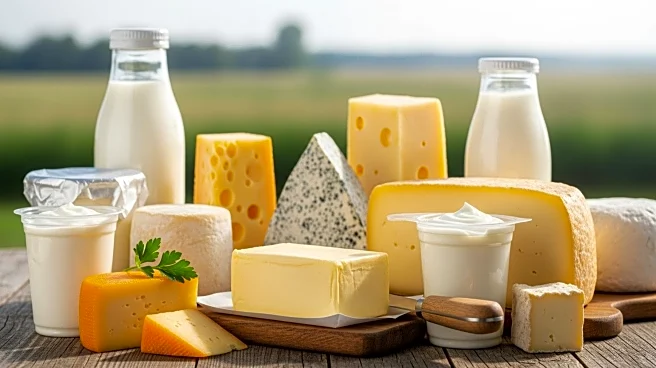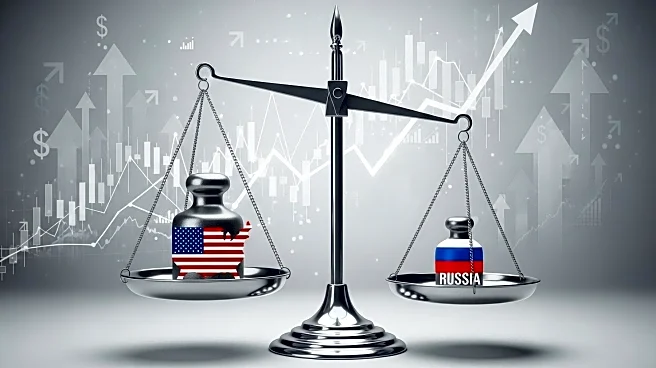What's Happening?
Dairy prices have been declining globally for three consecutive months due to increased milk output across major exporting regions, including the United States, European Union, United Kingdom, New Zealand, and South America. This surge in production has led to an imbalance between supply and demand, causing prices to soften. In the U.S., the national herd size is at its largest since the 1990s, contributing to the oversupply. Analysts Brittany Feyh and Jose Saiz from Expana note that high farmgate prices, cheap feed, favorable weather, and a decline in disease cases have boosted production, particularly in Europe. Despite the decline, dairy prices remain above 2024 levels, with butter prices falling by 7% and skim milk powder by 4.3%.
Why It's Important?
The decline in dairy prices has significant implications for the U.S. dairy industry and global markets. As U.S. farmers continue to capture more global market share due to competitive pricing, the oversupply situation could lead to further price reductions, affecting profitability. The bearish outlook for cheese and whey markets suggests potential challenges for producers in these sectors. Additionally, the high production levels may impact international competitiveness, particularly for European dairy products. Consumers may benefit from lower prices, but producers could face financial strain if the trend continues.
What's Next?
If current production trends persist, dairy prices may continue to decline, potentially leading to adjustments in production strategies by farmers and industry stakeholders. The U.S. dairy industry may need to explore new markets or diversify products to mitigate the impact of oversupply. Analysts suggest that milk production is likely to grow into 2026, driven by profitable farm milk prices. Stakeholders will be closely monitoring market dynamics and consumer demand to adapt to changing conditions.
Beyond the Headlines
The ongoing decline in dairy prices highlights broader economic and environmental factors influencing agricultural production. The role of climate conditions, disease management, and international trade policies are critical in shaping the future of the dairy industry. Ethical considerations regarding sustainable farming practices and the environmental impact of large-scale production may also come to the forefront as stakeholders seek to balance profitability with responsibility.













